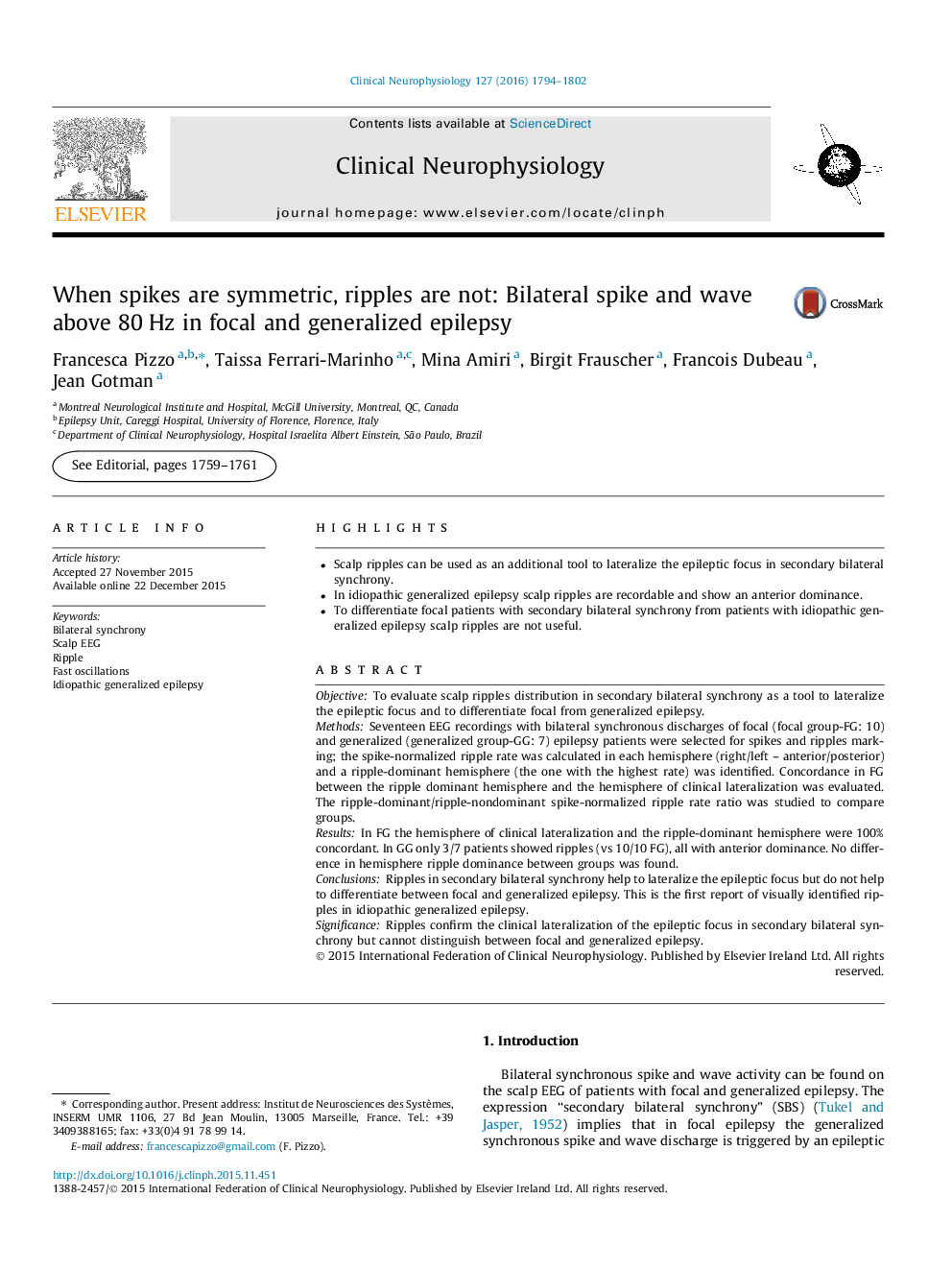| Article ID | Journal | Published Year | Pages | File Type |
|---|---|---|---|---|
| 3042892 | Clinical Neurophysiology | 2016 | 9 Pages |
•Scalp ripples can be used as an additional tool to lateralize the epileptic focus in secondary bilateral synchrony.•In idiopathic generalized epilepsy scalp ripples are recordable and show an anterior dominance.•To differentiate focal patients with secondary bilateral synchrony from patients with idiopathic generalized epilepsy scalp ripples are not useful.
ObjectiveTo evaluate scalp ripples distribution in secondary bilateral synchrony as a tool to lateralize the epileptic focus and to differentiate focal from generalized epilepsy.MethodsSeventeen EEG recordings with bilateral synchronous discharges of focal (focal group-FG: 10) and generalized (generalized group-GG: 7) epilepsy patients were selected for spikes and ripples marking; the spike-normalized ripple rate was calculated in each hemisphere (right/left – anterior/posterior) and a ripple-dominant hemisphere (the one with the highest rate) was identified. Concordance in FG between the ripple dominant hemisphere and the hemisphere of clinical lateralization was evaluated. The ripple-dominant/ripple-nondominant spike-normalized ripple rate ratio was studied to compare groups.ResultsIn FG the hemisphere of clinical lateralization and the ripple-dominant hemisphere were 100% concordant. In GG only 3/7 patients showed ripples (vs 10/10 FG), all with anterior dominance. No difference in hemisphere ripple dominance between groups was found.ConclusionsRipples in secondary bilateral synchrony help to lateralize the epileptic focus but do not help to differentiate between focal and generalized epilepsy. This is the first report of visually identified ripples in idiopathic generalized epilepsy.SignificanceRipples confirm the clinical lateralization of the epileptic focus in secondary bilateral synchrony but cannot distinguish between focal and generalized epilepsy.
